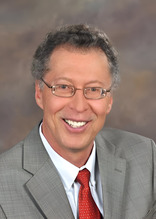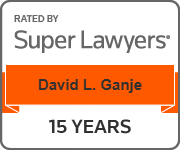As a Harding County cowboy once said, “Hey, I ain’t asking for an easement on the land – just the right to recreate on the land.” If you are an easement holder you probably have the right to walk across your neighbor’s land. But if one’s obligation is the legal cousin to an easement – the “restrictive covenant” – you may have to run across the land at night because you are not sure if you have the right to even be there.
Easements are different than restrictive covenants. An easement is a conveyance, that is a transfer, of some real property rights. – usually to a neighboring property. A restrictive covenant is not a transfer of rights but is a legal promise to do or not do a particular act concerning the property. A restrictive covenant creates a limitation on the use of one’s land so that the value and enjoyment of another party’s land is protected.
This opinion piece is not a commentary on the proper strategy for negotiating easements but rather an overview of some of the bigger issues I run across in this legal neighborhood. Easement agreement terms and conditions are as broad as they are long. For example, property requiring ingress or egress across BLM controlled land, such as the business property previously known as the Mustang Ranch, requires easements from various agencies of the government.
On a more pedestrian level, easements may be established for personal, family or household purposes, as well as for agricultural and business purposes such as the typical ingress and egress scenario. With an easement taken or recorded on your land, you may own the land, but you may not control all its access and have unlimited use within the area of the easement.
The law has created one type of easement however which is like a restrictive covenant. It is called a negative easement. A negative easement prohibits a landowner from using his property in a particular manner. Wildlife easements, conservation easements, as well as light and air easements are examples of negative easements. I have also dealt with what I call an “unofficial park easement.” An unofficial park easement is a public right of entry to a limited area for a scenic overlook or for a rest stop along a highway.
Easements may provide tax benefits to the landowner. By reducing the market value of a ranch property, an easement may substantially reduce the estate tax that are due when the ranch is inherited.
Easements rights and obligations are not Mickey Mouse legal issues. The granting of an easement is not the simple matter of giving another party access to land. The large pending Keystone XL pipeline project is now at a critical stage because the US Army Corps of Engineers failed to follow federal law under the National Environmental Protection Act when the Corps granted an easement for the project. A federal appellate court ruled this year in favor of the Standing Rock Sioux Tribe adjudging that the granting of the pipeline easement violated NEPA. The appellate court affirmed the trial court’s vacating of the easement given through federal lands and ordered the Corps to prepare an Environmental Impact Statement. The South Dakota Supreme Court in 2018 declined to hear challenges to the pipeline because of the lack of jurisdiction over other issues presented.
Reviewing landowner’s easement rights and responsibilities is serious stuff, not to be overlooked. A party to a so-called informal or unrecorded easement is like a guy dating a rich lady from Sioux Falls. Sooner or later, there is bound to be trouble. Easements are everywhere. Most real property in the state has some type of easement “attached” to it.
Ignore an easement at your peril. And unrecorded easements and “gentleman’s agreements” are not covered by title insurance policies. Property easements are likely to have effect on your life. Easement obligations need to be respected. To illustrate, we have the recent criminal prosecution of a farmer in South Dakota for laying drain tile over a wildlife easement. After the conviction in this case the prosecutor said that requiring the defendant to restore the wetlands sends an important message. I do not fault a prosecutor who is attentive to environmental issues. However, could the government’s message have been sent by other means? Could a required wetlands restoration and a civil enforcement proceeding have been filed against the farmer? Could the government have protected its rights civilly under the legal terms of the written easement agreement? It appears that it is better to sin against God than to sin against a bureaucracy. See my piece on this subject at: https://www.capjournal.com/opinions/editorial/it-is-better-to-sin-against-god-than-against-a-bureaucracy/article_394720c8-4c2e-11e8-88a8-6b0a2f67acbe.html
David Ganje practices law in the area of natural resources, environmental and commercial law with Ganje Law Office. His website is Lexenergy.net.





